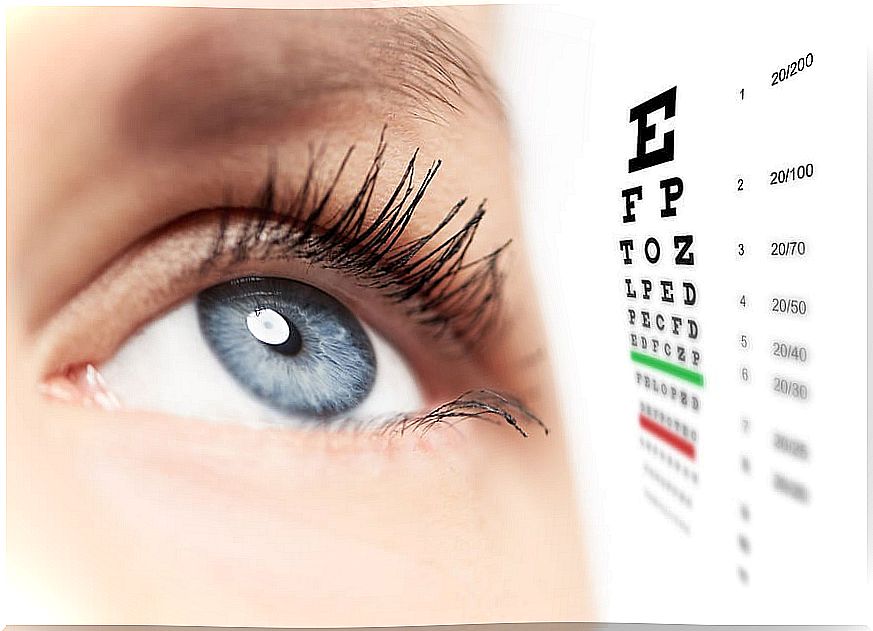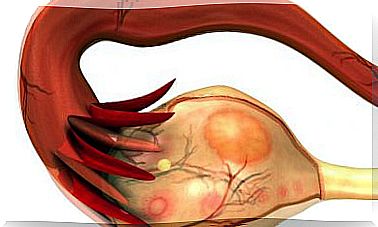Keratoconus, What Does This Pathology Consist Of?
Keratoconus is an ocular pathology that affects, specifically, the cornea. The cornea is the transparent, dome-shaped membrane that forms the front of the eye, in front of the iris. It is responsible for focusing the light rays for vision.
It is a progressive disease that alters the shape of the cornea, causing it to change from a dome to a cone shape. In addition, the cornea also thins. All this causes that the rays cannot be focused correctly and the vision becomes blurry.
Keratoconus is considered a rare disease, since its incidence is low. It is estimated that there are only about 2 new cases per 100,000 inhabitants each year. In addition, many factors influence its development.
However, people who suffer from it are usually adolescents or young adults. It notably affects your quality of life, since it greatly alters your vision. Therefore, in this article we explain everything you need to know about keratoconus.
What is keratoconus?

As we have already mentioned, the normal cornea is dome-shaped, and this shape is what allows light rays to hit the retina correctly so that the vision process can take place.
Keratoconus is that the cornea is progressively modified and changes that dome shape, adopting a cone shape. It is a non-inflammatory pathology that can appear in only one eye or in both. Most of those who suffer from it are teenagers.
These changes in the morphology of the cornea are the cause of the rays not being able to focus well. As a result, vision is disturbed and distorted. Both myopia and irregular astigmatism develop:
- The Myopia is a defect that causes distant objects can not be seen clearly.
- The astigmatism is that objects both near and far are perceived blurred or deformed.
What other symptoms appear with keratoconus?
Many people who suffer from it also suffer from an exaggerated sensitivity to light. In the same way, it is typical that they have to change the regulation of the lenses of their glasses frequently. Symptoms usually vary over time.
Other typical symptoms are redness of the eyes and great discomfort when wearing contact lenses. Normally, the disease takes a long time to progress, so this last symptom is more unlikely.
However, there are cases in which keratoconus is complicated. These people suffer a sudden deterioration, which causes the cornea to begin to undergo a fibrosis or scarring process. When this happens, the cornea becomes less transparent and vision worsens even more.

What are the causes?
The truth is that the mechanism that causes the appearance of keratoconus is not very well known. However, scientists believe that a multitude of factors are involved in its development.
First of all, it seems that genetics play an important role, as many of the people who suffer from it have a family history of it. It is also associated with syndromes such as Down syndrome or Ehlers-Danlos syndrome.
Similarly, factors such as minor trauma to the eye, persistent scratching, or irritation of the eyes appear to be related. It even seems to be related to continuous exposure to the sun’s rays.
How is keratoconus diagnosed and how is it treated?
The diagnosis of keratoconus is relatively straightforward. Normally, it is sufficient for the ophthalmologist to carry out a complete eye exam. In addition, tests can be used to observe the pathology in more detail.
For example, slit lamp scans, corneal topographies, or keratometries are performed. Keratometry is a test that allows you to measure the curvature of the cornea.
Keratoconus treatment varies from case to case. It is the ophthalmologist who must choose which is the most appropriate for each patient. Many mild cases can be treated simply with contact lenses; others more complex may require a corneal transplant.
In conclusion
Keratoconus is a progressive disease that affects the cornea, preventing it from focusing light rays correctly. Vision becomes blurry. It usually affects young people. If in doubt, the ideal is to go to the doctor to fully examine our vision.









